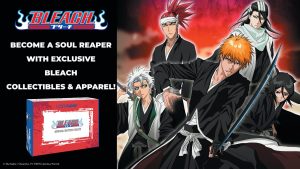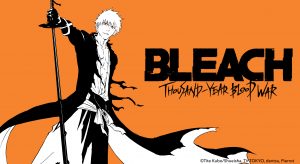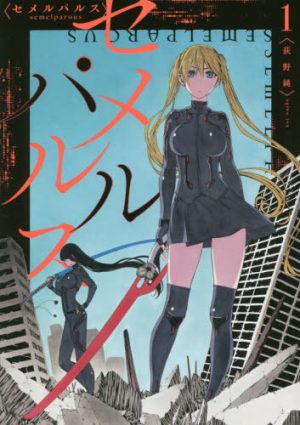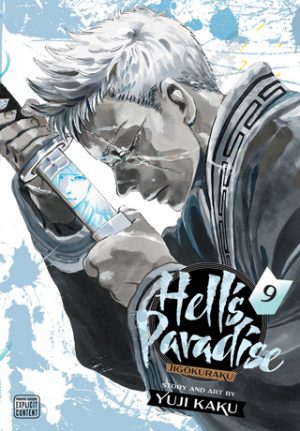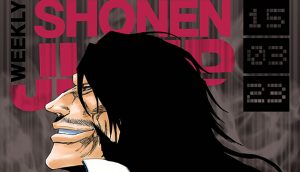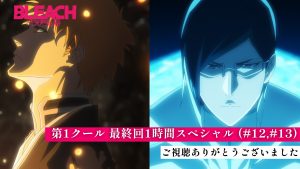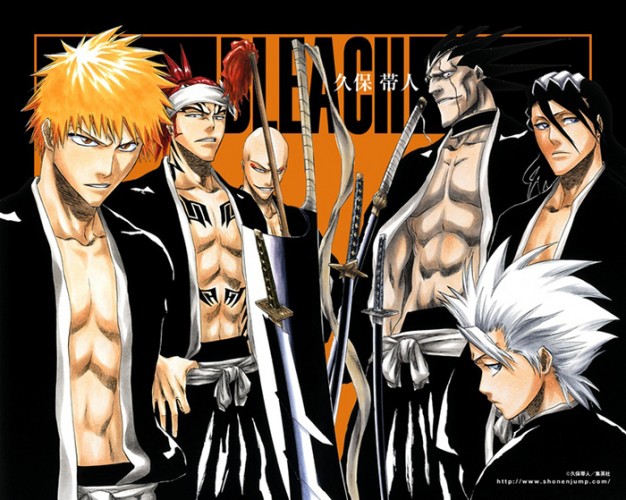
Ichigo Kurosaki: high school student and part-time Soul Reaper.
For a generation of manga readers, Kubo Tite’s Bleach was an integral part of the so-called “Big Three” shounen manga, alongside One Piece and Naruto. Starring an orange-haired teenager with an abnormally large sword and featuring long arcs full of increasingly powerful enemies, Bleach’s impressive 686-chapter run began in 2001 and ended fifteen years later, in 2016.
With over 120 million copies of its seventy-four volumes in circulation as of 2018, Bleach cemented itself as Shueisha’s sixth best-selling manga of all time (and the eleventh best-selling manga overall). We here at Honey’s Anime are Bleach diehards – and in 2022, there’s more reason than ever to dive into Bleach’s universe of Soul Reapers, Hollows, Quincies, and Arrancar.
Later this year, Studio Pierrot will revive the Bleach anime, which ended prematurely in 2012. This new arc, entitled “Bleach: Thousand-Year Blood War” will follow the final arc of the manga – a massive power struggle with the fate of the universe hanging in the balance!
But there’s no need to watch the anime or wait for the new season - you can start reading Bleach now, and catch up on one of the greatest shounen manga ever! Join us today on Honey’s Anime, as we discuss Why You Should Read Bleach in 2022!
Fear not, there are no major plot spoilers ahead. We promise!
Wait, What’s This All About?!
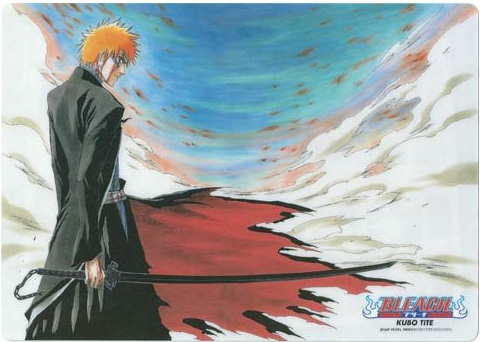
Let's take a step back.
Bleach might be a name you’ve heard of before, but unlike Naruto and One Piece, it has somewhat faded into the background of the shounen world. Considering the manga lasted for fifteen years, some of our readers might have been born sometime during Bleach’s run – and if that doesn’t make us feel old, nothing will…
So what’s Bleach all about, and why should you read it?
Bleach stars Ichigo Kurosaki, a fifteen-year-old high schooler who can see ghosts. He’s something of a delinquent, but he has a good heart, even if he can be a little hard-headed. He has a run-in with Rukia Kuchiki, a Soul Reaper who exists to slay Hollows – huge, malformed spirits that are born when deceased humans with unfinished business fail to pass on peacefully into the Soul Society.
After Rukia winds up injured trying to protect Ichigo’s family from a Hollow, he borrows her power to become a substitute Soul Reaper, unleashing his own hidden potential to defend his family. This action robs Rukia of her powers and incurs the wrath of the Soul Society, who condemn Rukia for her actions and sentence her to death.
Thus begins the first arc of Bleach, as young Ichigo grapples with his newfound powers, his responsibility to destroy Hollows, and ultimately leads to his invasion of the Soul Society to save Rukia from her unjust execution.
The Legacy of Bleach
Bleach really laid the groundwork for many of the other great shounen works to follow. Kubo’s series was much-respected by both his contemporaries and those who followed in his footsteps. In 2021, a number of famous mangaka came together to honor Bleach with an art exhibition hosted by Shueisha, and many authors cite Kubo and Bleach as inspirations for their own works.
Jututsu Kaisen, one of the current best-selling anime and manga, is penned by Akutami Gege, and in a bonus comic from 2018, she credited Kubo as being one of her main inspirations. Bleach’s incredible character designs and secret societies - like the Gotei 13 branch of the Soul Society - were also listed as inspirations for Gotouge Koyoharu, the author of Kimetsu no Yaiba (Demon Slayer).
With Bleach being the inspiration for many popular series, any shounen fan should definitely check out the original material responsible for these incredible new works!
Top Three Reasons You Should Read Bleach
So, now that you understand the history and context behind Bleach, why should you dedicate the impressive amount of time required to read through Kubo’s masterpiece? Let’s break it down the one way that Honey’s Anime knows best – with the Top 3 Reasons You Should Read Bleach!
3. The Artwork Still Holds Up
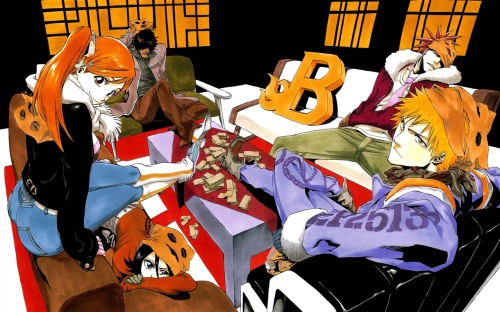
Bleach always had a particular energy to it, a confident swagger that brought to life gorgeously illustrated characters that practically leaped off the page. Every chapter illustration, without fail, slams home with a grunge-inspired, urban edge that serves to ground the series even in its most fantastical moments.
While modern manga are drawn with digital tools and special effects, Bleach started all the way back in 2001, when drawing tablets were practically unheard of in the manga industry. Despite that original pen-and-paper approach, Bleach’s artwork hasn’t aged a day in the past twenty-one years.
Battles are fast-paced, but never chaotic; they’re action-packed, but never outstay their welcome. In various interviews, Kubo revealed that he constructed his action sequences with the aid of rock music, and the fights in Bleach certainly have a musical quality to them. We’d definitely love to know what songs inspired Kubo for some of our favorite fights!
Bleach also changes up character designs quite often, with Ichigo evolving his sword multiple times throughout the series. His classmates and friends each become fighters in their own ways, participating alongside Ichigo even when death is a very real possibility. They, too, undergo multiple evolutions, gaining new clothes and weapons that lend a sense of progression to the arcs.
2. A Multicultural Series

The world of Bleach is populated by societies from many walks of life, and Kubo paid specific attention to naming characters and abilities based on real-world influences. For instance, the Soul Society was conceived from the idea of a shinigami – a ‘death god’ – wearing a kimono. Thus, the inhabitants of the Soul Society are all Japanese and their nomenclature was reportedly inspired by ancient Japanese literature – giving us their powerful bankai attacks, and the zanpakuto blades.
In the Hueco Mundo – “Hollow World” – arc, the characters and their world are named and inspired by Spanish words, giving us the powerful Espada unit of Arrancar fighters. Equally so, the Quincy fighters and the Wandenreich empire have strong roots in the German language. And although it might not be everyone’s favorite arc, the Fullbring group were given names based on English rock music.
Kubo Tite’s Bleach spin-off, Burn the Witch, continues this theme. It takes place in ‘Reverse London,’ the British branch of the Japanese Soul Society, where the main characters fight Dragons instead of Hollows – paying attention to England’s historic usage of dragon livery throughout the ages.
In this regard, Bleach feels more robust than some other shounen series, which tend to circle around just one or two cities and a specific subset of enemies or supernatural threats. Bleach’s multicultural aspects give it a broad appeal to many different types of readers, too, and if nothing else, this linguistic focus adds a very memorable layer to an already excellently developed world.
1. It’s Better Than the Anime
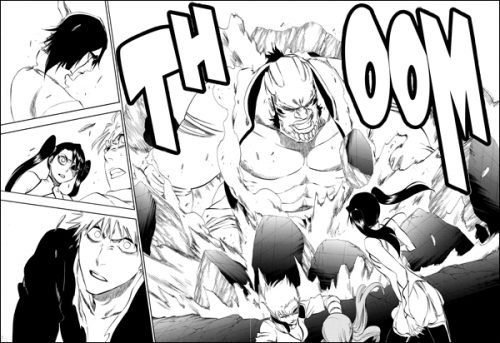
Yes, we did start this article by reminding you that the new anime is coming out at the end of the year – but you’re in the manga part of Honey’s Anime, so of course, we’re going to recommend the manga first and foremost!!
The anime has… not aged gracefully, shall we say? The early episodes are produced in 4:3 ratio, and the anime frequently added long, irrelevant filler arcs. Meanwhile, the manga still looks great despite its age, and although the major arcs frequently span at least one hundred chapters or more, they are action-packed and fly right off the pages.
Although we’re very excited to see Bleach return to our screens, the character design that works so well in the manga doesn’t translate perfectly to animated format. With such a heavy focus on the concepts of “black” and “white” – an artistic obsession that covers everything from the series’ name, all the way down to the Shinto religious connotations of the human soul – the two-toned pages of the manga bring out the best in Kubo’s vision.
There’s another reason to read the manga…it’s finished! If you start reading now, you could likely finish the entire 74-volume series and know exactly what’s coming in the Thousand-Year Blood War before the first of the new episodes drop!
Okay, But Wasn’t the Manga Cancelled?
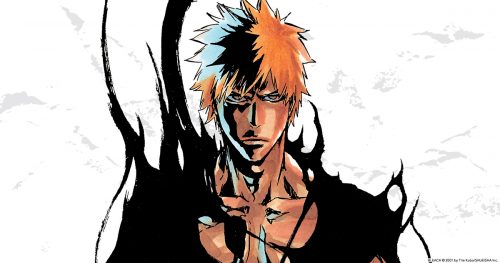
If you’re familiar with Bleach, you might have also heard that the ending was a little rushed. We’re not going to pretend that the final few chapters of Bleach are amazing – but since the series ended in 2016, tempers have cooled, and opinions have generally improved regarding Bleach’s final pages.
That said, Kubo wasn’t allowed to end his series as he desired. Disputes between himself and his publisher arose throughout the last few years of Bleach’s publication, and the editors of Weekly Shounen Jump called for Bleach’s end due to falling popularity. This led to a compromised ending that didn’t quite satisfy fans back in the day.
Since then, however, Kubo has been open to continuing Bleach – with numerous light novels either written by himself or co-authored with other writers. The most recent light novel trilogy, released throughout 2020, is entitled Bleach: Can’t Fear Your Own World and takes place after the Thousand-Year Blood War arc, adding some additional context that was sorely missing from the manga’s ending.
Despite the rushed ending, we would still highly recommend reading the manga. There are nearly seven-hundred chapters of action-packed battles, shocking betrayals, political machinations, and a persistent theme of humanity and the nature of the soul itself.
That’s pretty heavy stuff for a substitute soul reaper to deal with!
Final Thoughts
These days, we’re spoiled by amazing shounen manga that are frequently getting adapted to television and the big screen. Sometimes, though, it’s important to look back at the history of the genre to understand just how far we’ve come – and in doing so, you can discover some hidden gems you might have missed out on otherwise!
Kubo Tite’s Bleach remains one of our favorite shounen series of all time, and it has thankfully aged extremely well, remaining as relevant and entertaining in 2022 as it was in 2002. With a powerful and confident art style that still looks incredible, and a shounen power curve that sees our main character ‘level up’ against tougher and tougher enemies, Bleach rightly deserves its place in the shounen hall of fame.
Are you a fan of Bleach? Have you read the series yet, or is it something that’s still on your to-read list? Let us know what you think in the comments below, and as always, thanks for reading!
Recommended Post
Join Ichigo and His Crew With the Bleach Special Edition Crate!
Recommended Post
New Bleach One-Shot Manga Available for Free on Shonen Jump!
Recommended Post
semelparous Volume 1 Review [Manga] – Bloom into the Bleach
Recommended Post
5 Strongest Blind Swordsmen In Manga
Recommended Post


